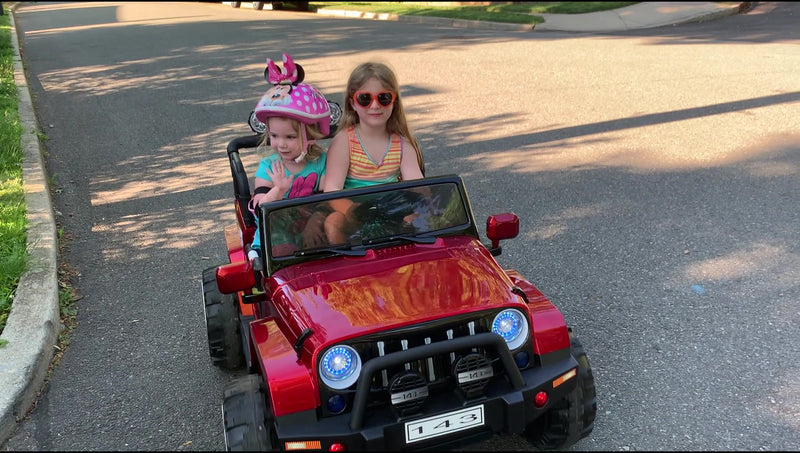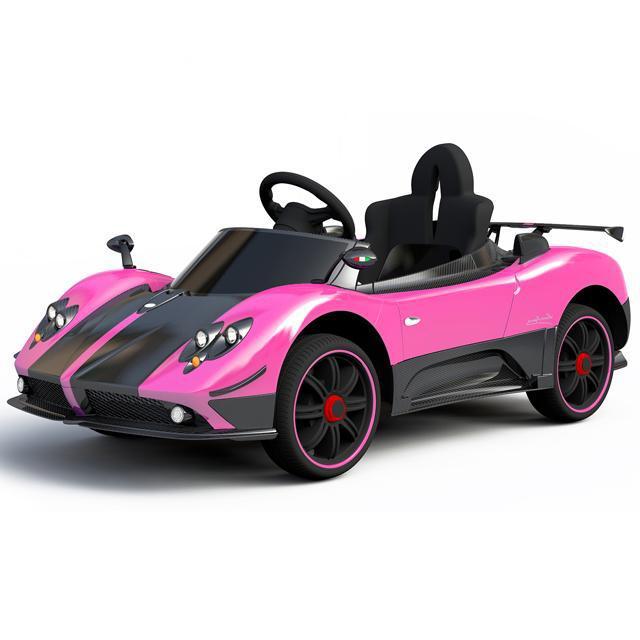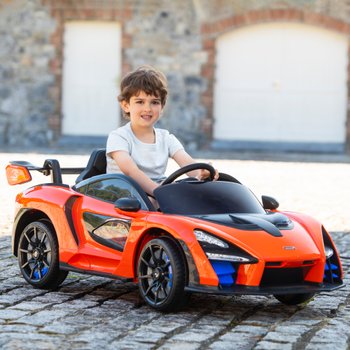Best Reasons On Picking Ride On Toys
Wiki Article
What Do I Need To Know About The Battery Life And Charging Time Of An Electric Ride-On Kids Car?
Knowing the battery type and charging times of an electric kids' ride-on vehicle is vital for ensuring maximum performance and continuous playtime. What do you need to know - Battery Type
The majority of electric vehicles for children are rechargeable, and typically use lead-acid battery or lithium-ion battery. Lithium-ion batteries typically have longer battery life and faster charging times than lead-acid batteries.
Capacity of the Battery
The size of the battery and capacity, expressed in amperehours (Ah) or watthours(Wh), will determine how long a ride on vehicle can run on just one charge. Batteries with high capacity allow for longer playtime, without needing recharge.
Run Time -
The duration of an electrical ride-on car refers how long it can operate continuously with a single charge. It can differ based on various factors like battery's capacity, motor's power, terrain, and weight of the driver.
For electric ride on cars, the typical runtime is between 30 minutes and 2 hours with one battery charge. Certain batteries with a higher capacity may provide an extended run time.
Charging Time
Charging time is the time needed to recharge the battery fully after it is depleted. The charging time varies based on battery capacity, charger specs, and the charging method.
The charging duration of electric ride-on vehicles is 8-12 hours. Certain models can charge faster rates, particularly those with lithium-ion batteries.
To ensure safety and a long-lasting battery life, it's important to charge the battery according to the specifications of the manufacturer. The battery's performance and its lifespan is affected by either overcharging it or undercharging it.
Charging Method
Electric ride-on vehicles are usually equipped with a charger that connects to a standard household outlet. Certain models have quick-charging capabilities or a smart charger that examines the status of the battery, and then adjusts the charging rate accordingly.
Make sure whether the charging port on the ride-on car are compatible in order to prevent damage to either the battery or the electrical components.
Additional Batteries
Certain electric ride-on vehicles might allow you to purchase extra batteries or spares for longer playing time. With extra batteries in stock, you can swap out the depleted battery for an fully charged battery to reduce downtime.
Understanding the battery and charging time of a ride-on kid's vehicle will ensure that you and your child have fun, uninterrupted playtime as well as thrilling adventures. Continuously charging the battery and observing the correct charging procedures will help increase the battery's life and performance. Check out the top rated McLaren kids car for site recommendations including toy a car, childs car toy, electric ride on, toy and car, ride on car, toy ride, childs electric ride on car, kidscars, childrens digger, toy in car and more. .

What Are The Different Skill Levels Which Electric Ride-On Cars Cater For?
The electric ride-on cars typically come with a variety of speed settings along with controls. These are designed to accommodate a variety of levels of proficiency and to ensure that children are secure experience. These features are used for safety and enjoyment.
Different children are at different levels of skill and confidence when it comes to driving on-road vehicles. Different speeds allow parents to alter the maximum speed based on the child's ability, which reduces the chance of collisions or accidents.
For young children or those who are just starting out younger children, slower speeds are ideal for the ride-on cars. The higher speeds are best for older children or children with more experience.
Gradual Learning Curve -
With a variety of speeds electric ride-on cars provide children with a learning curve that allows them to gradually develop their driving skills. The beginning drivers will be more confident as they become familiar with the controls at slower speeds.
Parents can gradually increase their speed as their child becomes more adept at driving, giving them a sense of achievement and progression.
Parental Control
Some electric ride on cars are equipped with parental controls that enable parents to limit their child's maximum speed. This feature offers parents security knowing that they can alter and intervene in the speed as necessary to ensure their children's safety.
Model-specific parental controls could include remote speed limitation, remote emergency stopping buttons as well as remote steering.
Adaptability
As children develop, so can their abilities and interests. Electric ride-ons with multiple speeds are able and able to adapt to changes in the child's needs.
As a child gains confidence and proficiency, they can progress to higher settings. This results in an even more exciting journey. Parents can limit the speed of their youngest children and other friends.
Customization
Multiple speed settings allow customization and personalization according to individual preferences and tastes. Children can choose the speed that is appropriate for their comfort and excitement level.
Some electric cars come with additional controls such as a variable acceleration and braking sensitivity. These controls permit finer control of driving in accordance with specific needs.
Electric ride-on vehicles with their different speed settings and controls features ensure a safe and adaptable riding experience to youngsters of all ages and abilities. These features aid children in developing confidence and abilities, and also provide them with enjoyable and thrilling adventures. Parents can supervise and intervene as needed to protect their children. Take a look at the best read more about electric kids cars for blog examples including electric ride on cars, a toy car, electric ride on cars, toy cars toy car, toy a car, toy a car, riding digger, childrens digger, electric ride on cars, toy the car and more. .

What Are The Different Kinds Of Remote Controlled Kids Cars? What Are Their Advantages And Disadvantages?
Remote-controlled vehicles for children, also known as RC cars, are available in a range of designs, sizes and prices that can accommodate different budgets and needs. This article will provide a summary of the pros and cons, and the sizes of remote controlled car types.
Electric RC Cars – Remote-controlled electric cars that are powered by batteries. They can be used indoors and outdoors. There are a variety of styles of RC cars like trucks, buggies and sportscars.
Nitro RC Cars - Gas-powered remote-controlled cars that offer greater speeds and performance, however they require more maintenance and knowledge to operate. Electric RC cars are less bulky and less expensive.
Scale Models: Remotely controlled replicas including real vehicles such as cars, trucks, planes and boats. Scale models come in different sizes, from 1 -10 to 1 -24, with larger scales offering more details and authenticity.
Sizes -
Remote control kids' cars come in a variety of sizes. From tiny to full-size replicas, they are available in all shapes and sizes. The size of a vehicle can impact the performance of it and its speed.
Micro-sized cars are small and light. This makes them perfect for indoor use, especially with young children. Larger models provide greater power and durability, making them ideal for off-road and outdoor driving.
Prices
The costs of remote controlled children's cars vary depending on factors like the size, features, brand and the quality of construction.
The micro-sized electric and nitro-powered RC car can be found in sizes that range between $20 and $100.
Models and high-end hobby RC cars range from a few hundred dollars to over 1000 dollars, depending on the degree of detail.
What are the pros and cons?
Pros -
Adults and children alike can take pleasure in the fun and excitement of remote-controlled vehicles.
Operating an R/C car helps children to develop spatial awareness, problem-solving skills and hand-eye cooperation.
Social Interaction - RC cars are fun to play with family and friends, and encourage the social aspect and cooperation.
Customization – Many RC cars can be customized using aftermarket modifications components and accessories that improve performance and look.
Cons
Cost - Top-quality remote controls for cars for children can be costly, especially hobby-grade models with advanced features.
Learning Curve - Operating an RC vehicle requires practice and knowledge, and young kids may have difficulty with the controls initially.
Maintenance is essential for car owners who own RC vehicles. They must regularly clean, lubricate and perform repairs or replace parts.
Safety Issues - RC safety of cars can be impacted due to electrical hazards, collisions as well as other risks if the cars are not operated with care and supervision by an adult.
In general, remote-controlled children's vehicles provide a thrilling and educational experience for kids of all ages. However, it's essential to consider factors such as the size, price features, safety, and size when choosing the right model for your child. Hobby-grade RCs may be suitable for more advanced kids and those who love to drive and simpler models can be a good fit for younger children and beginners. Read the most popular Lamborghini kids car kidscars.co.uk tips for website info including electric ride along car, riding digger, ride a toy, childrens ride on, kidscars, electric ride along car, remote control childrens car, ride on digger, toy ride, car toy car toy and more. .
